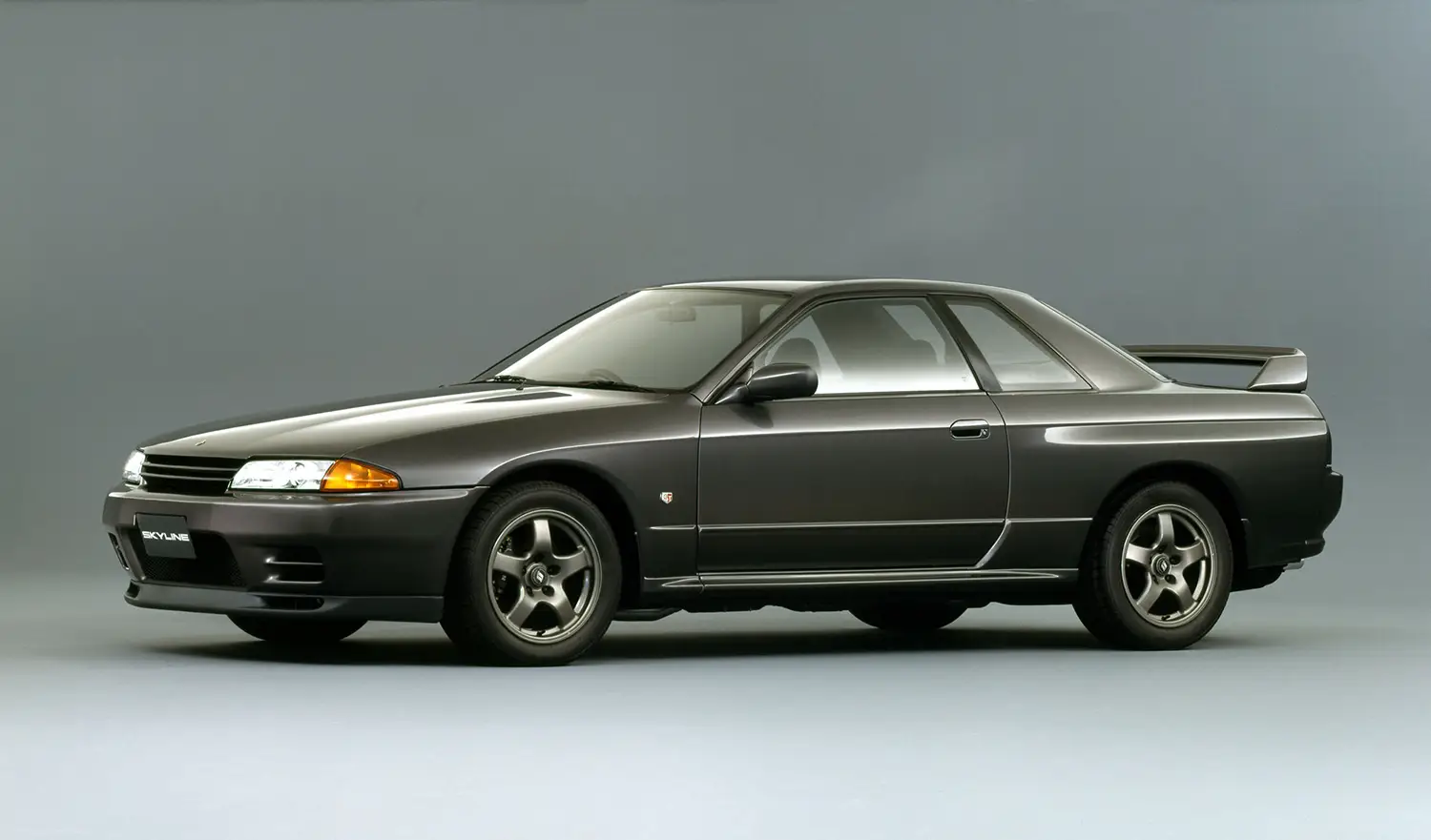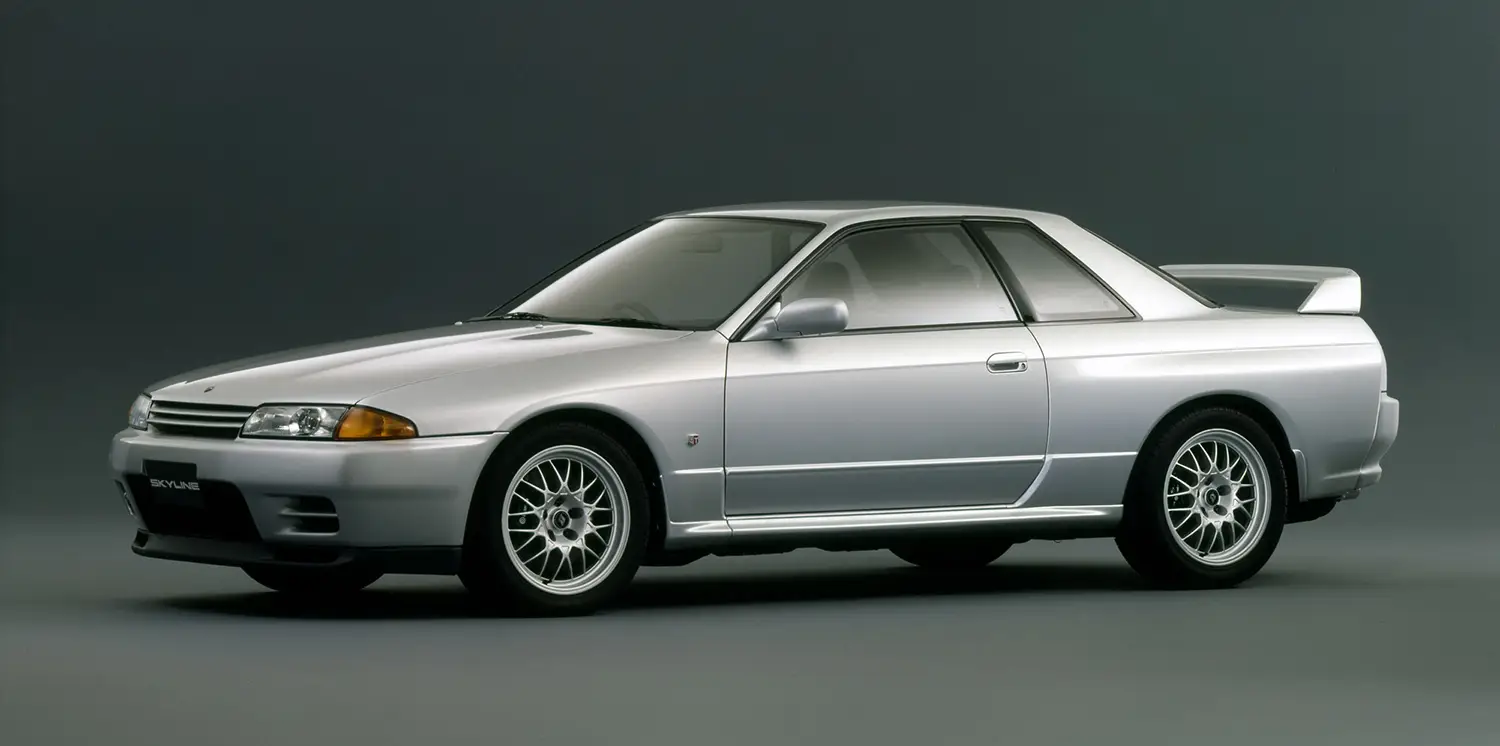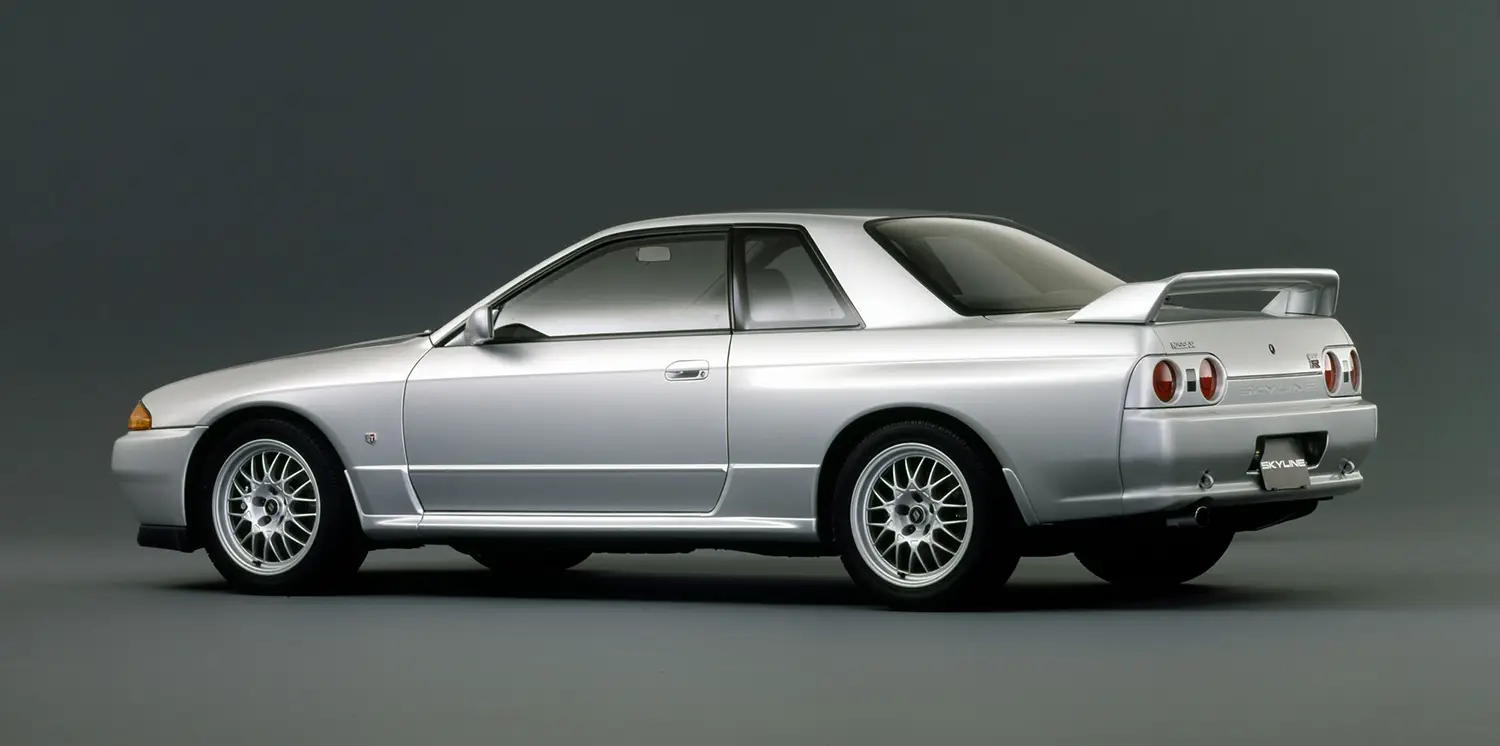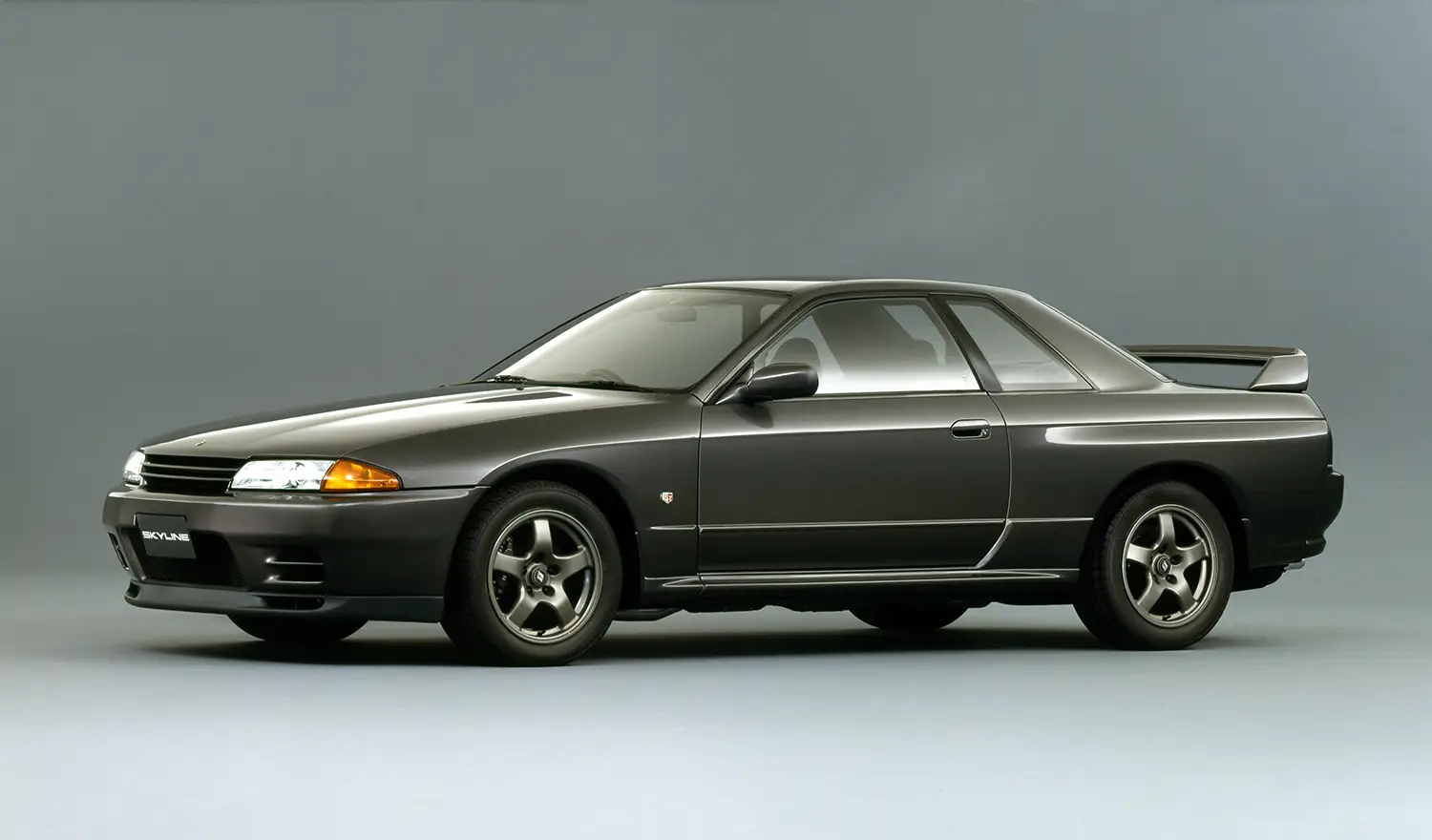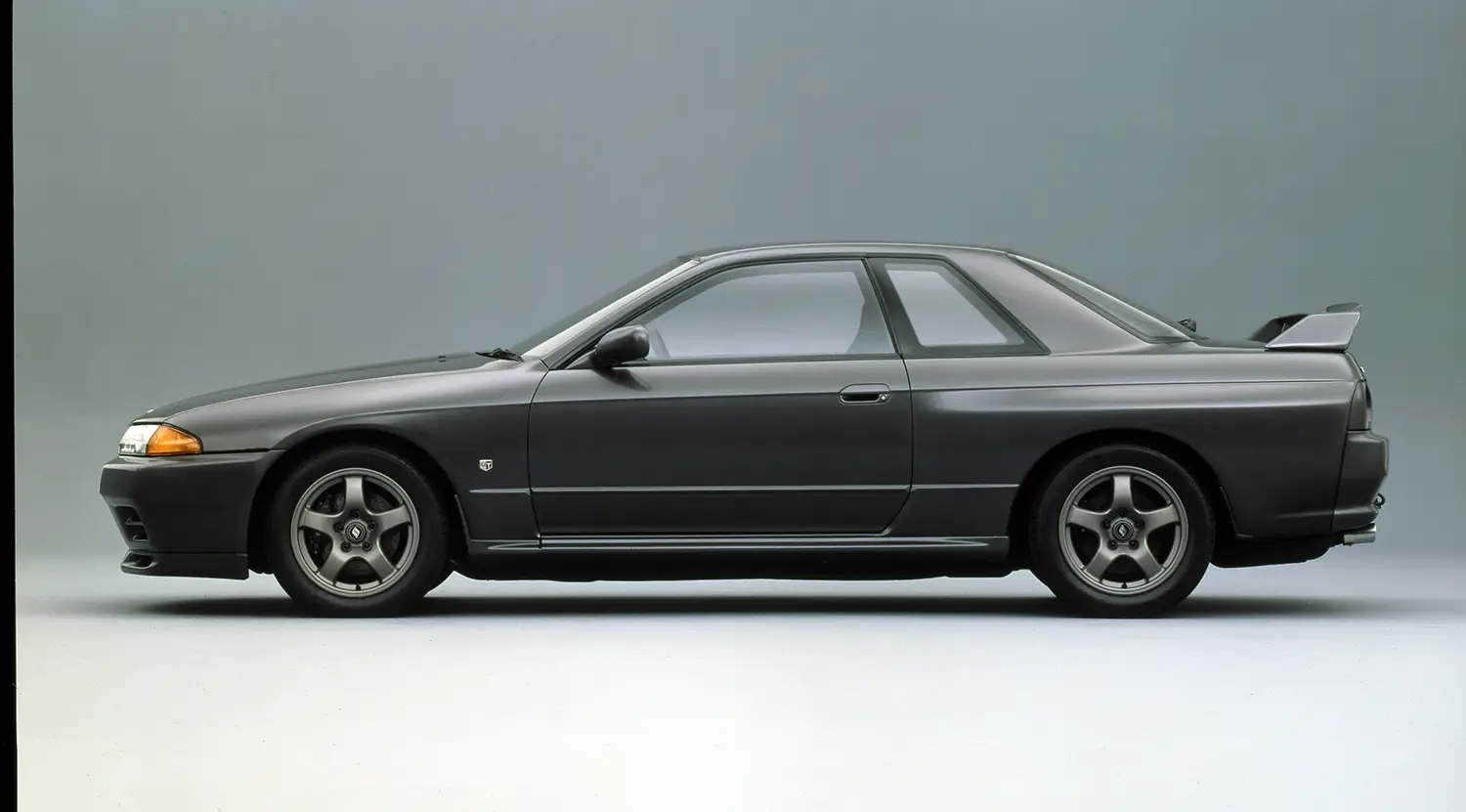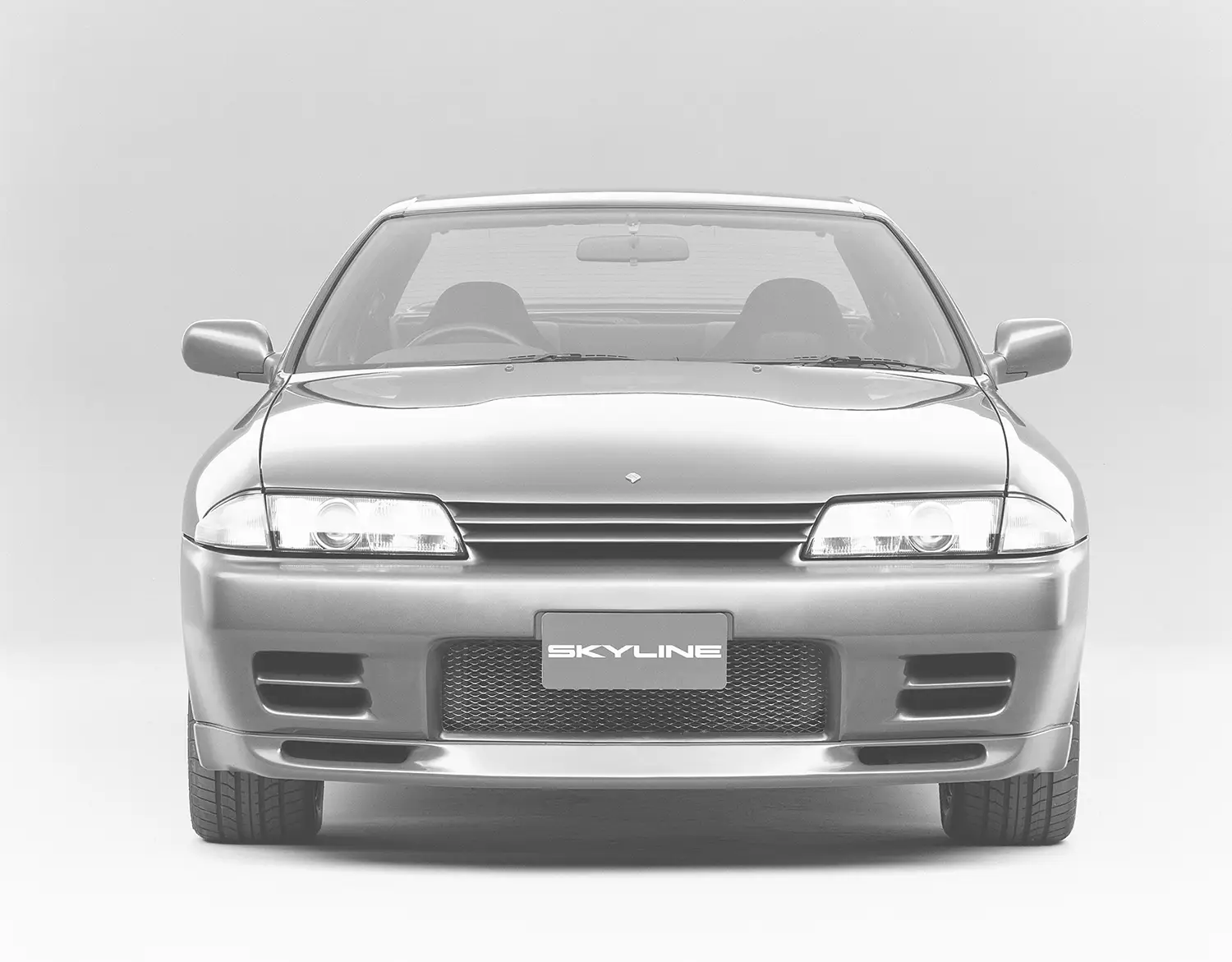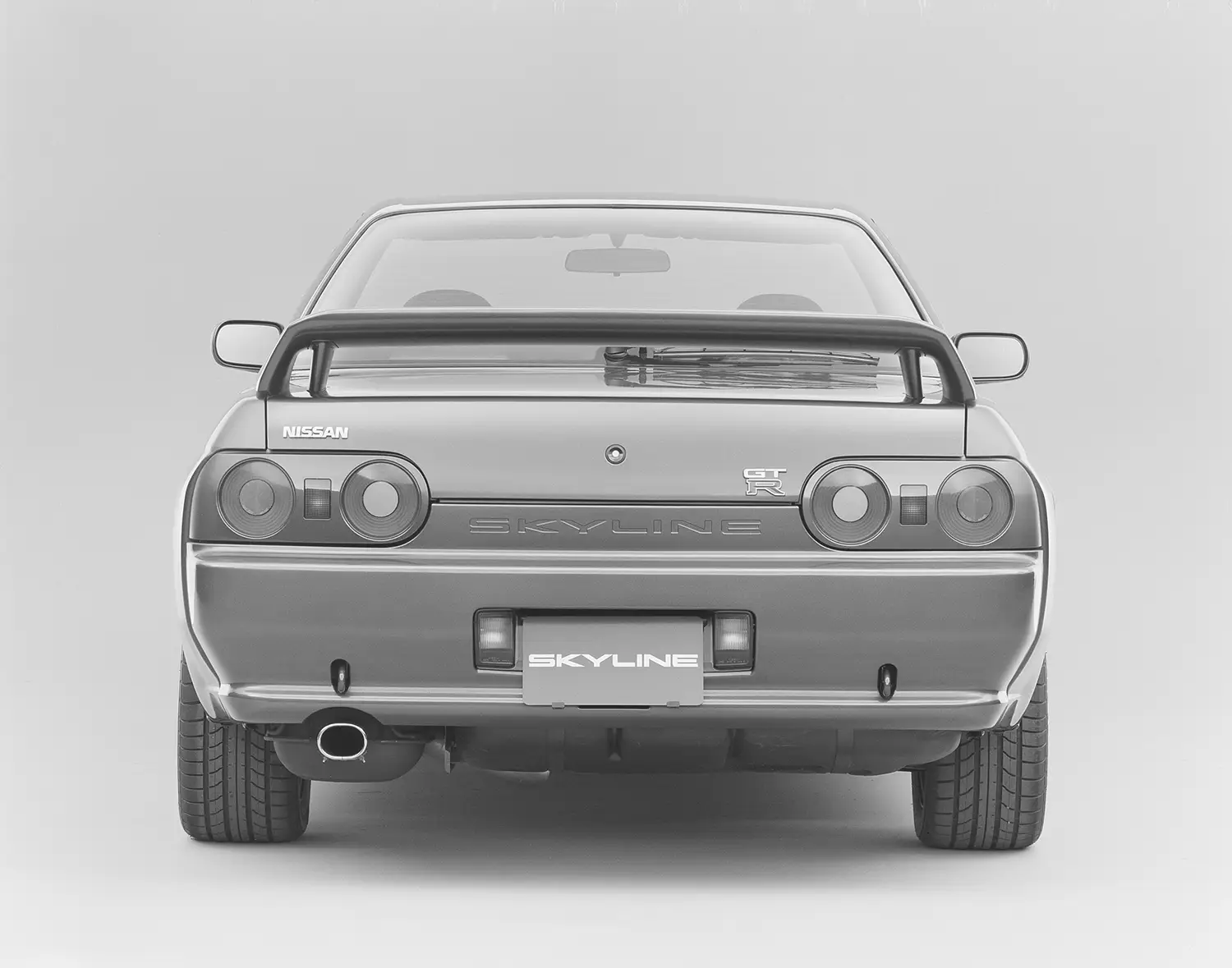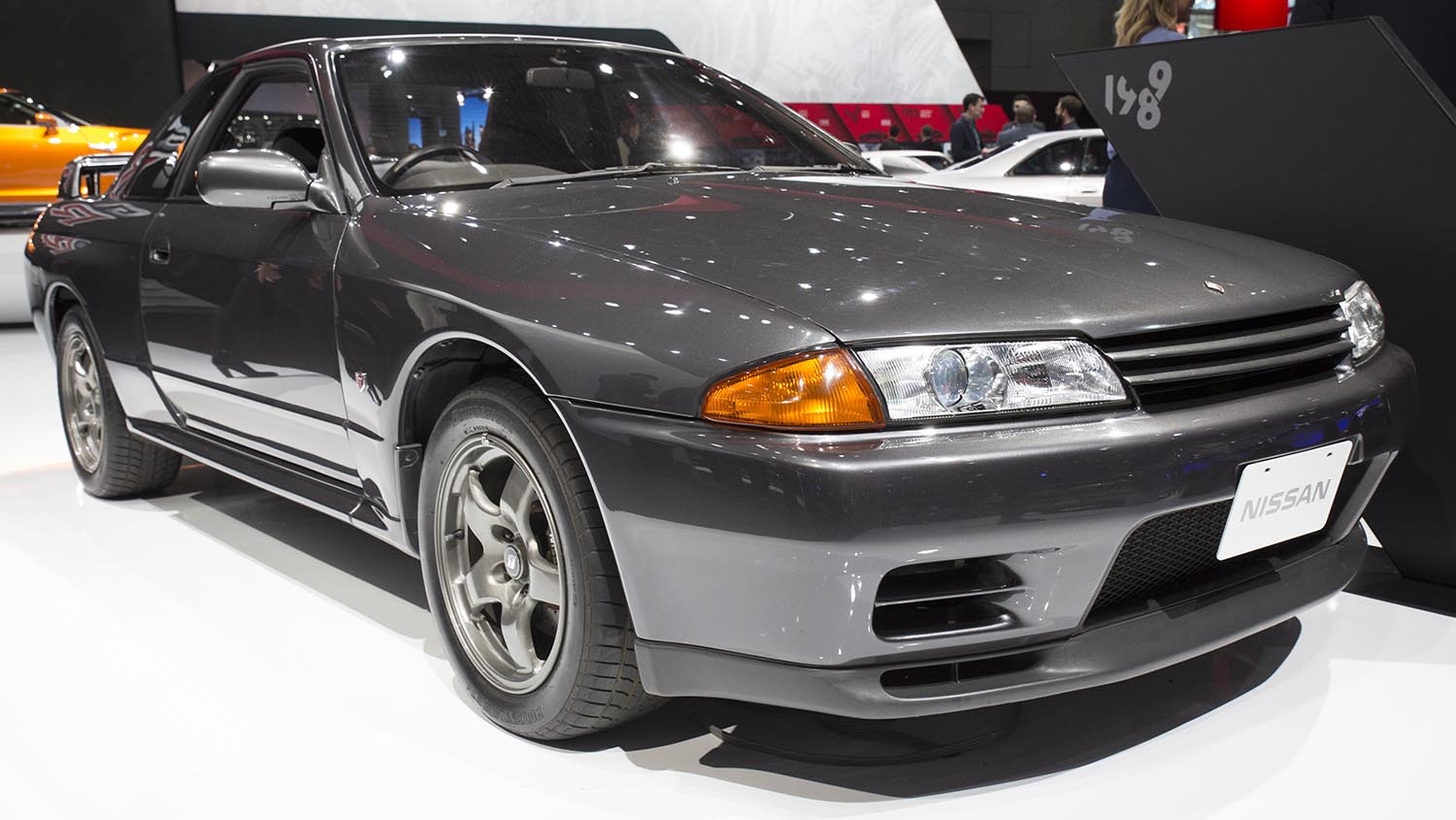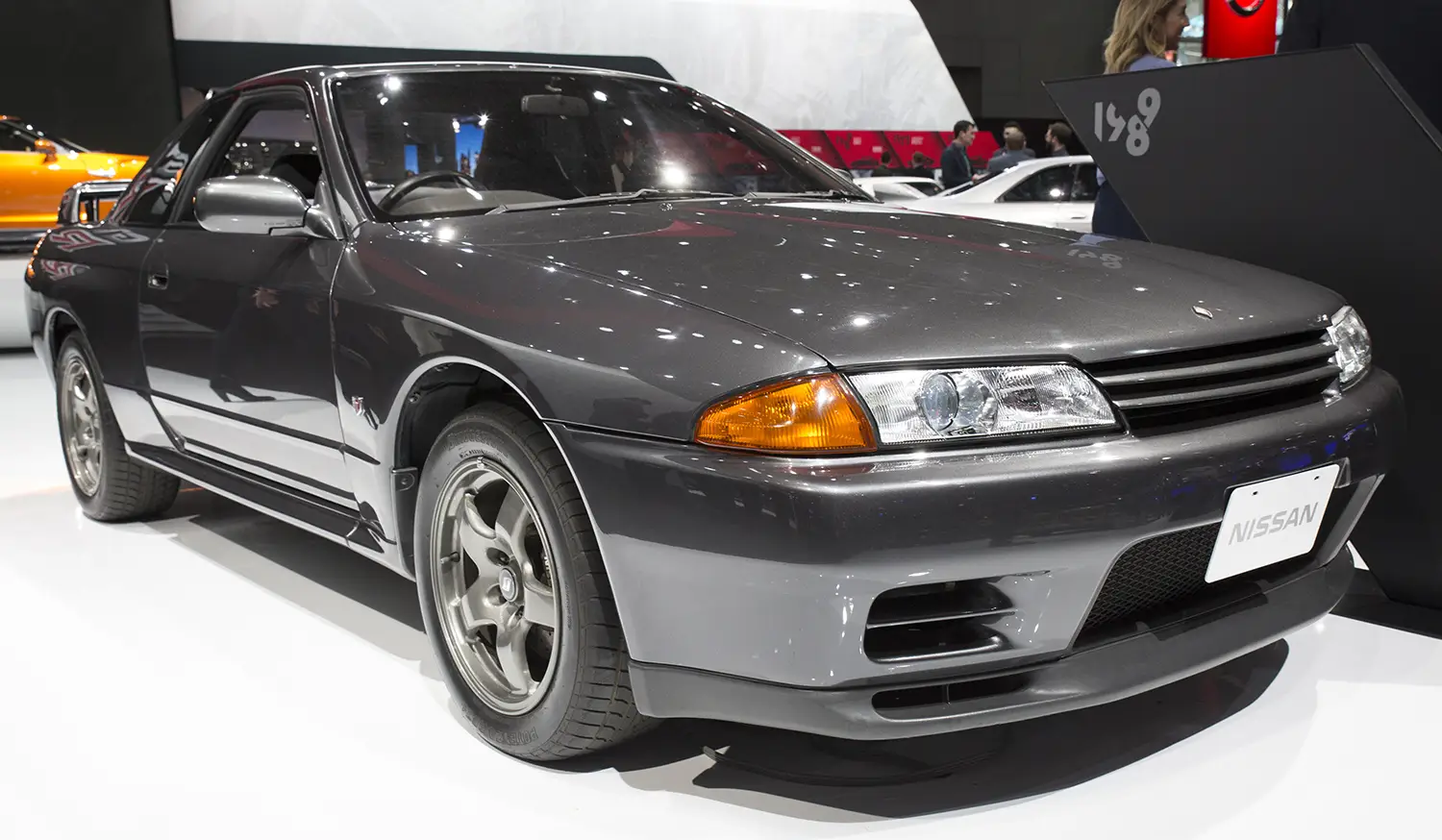
After a sixteen-year absence, the GT-R nameplate returned in spectacular fashion in 1989. The car was the BNR32 chassis, forever known as the R32. The primary goal for the new model was not road sales, but complete dominance in Group A Touring Car racing. Therefore, the 1989 Nissan Skyline GT-R was engineered from the ground up to be a technological force, permanently reshaping the high-performance landscape in the process.
The Great Comeback: GT-R Rebirth
The Skyline name had been a pillar of Nissan performance. However, the GT-R badge vanished in 1973 due to global oil crises and rising emissions standards. Fans waited patiently for the return of a true performance flagship. When the R32 debuted, it exceeded every expectation. Nissan built the car around a specific racing regulation. Consequently, the production model was a true homologation special.
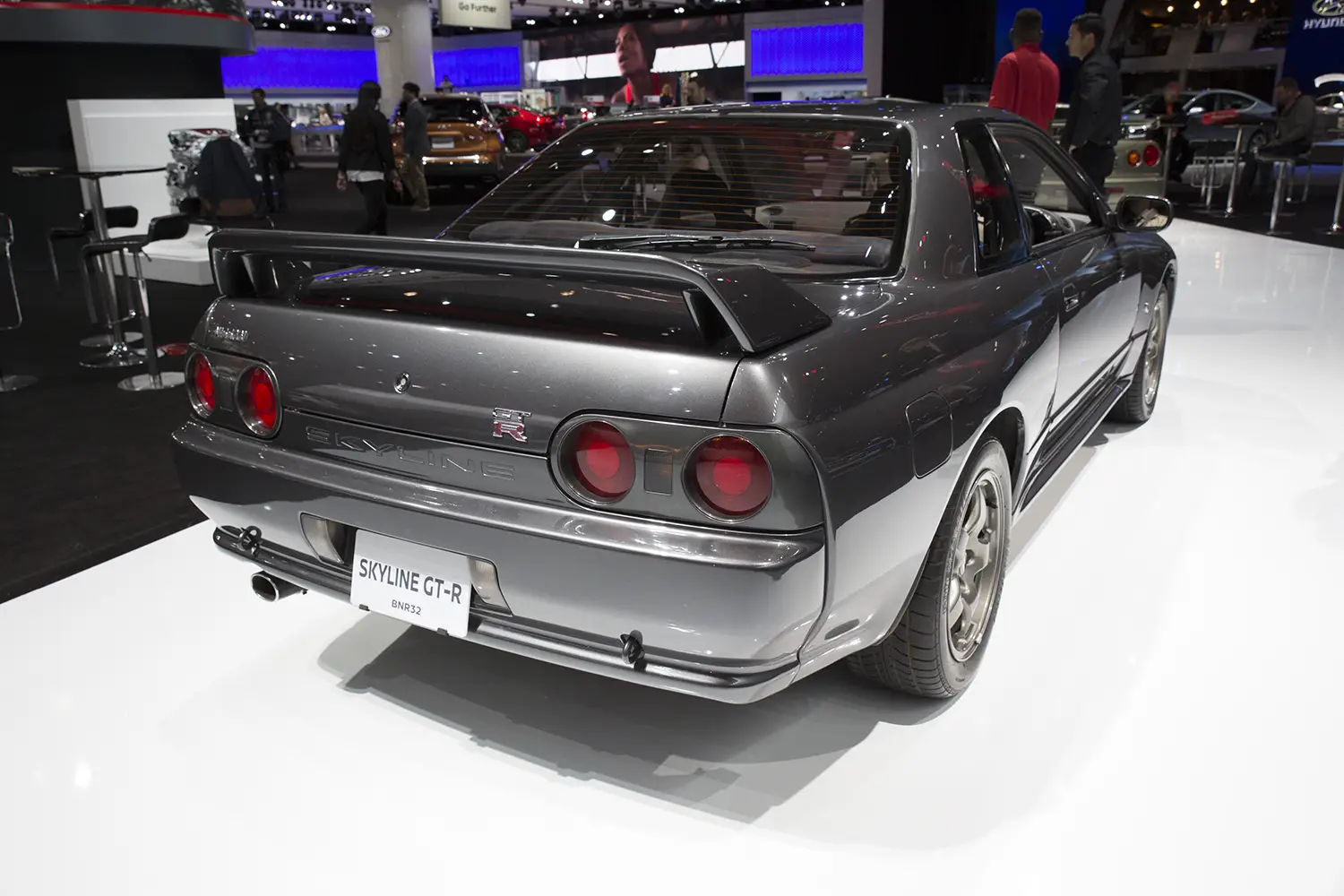
The R32 adopted a sharper, more compact silhouette than previous Skylines. It was based on the standard R32 coupe body shell. However, the GT-R added flared wheel arches and an aggressive front bumper. These styling cues hinted at the massive performance within. The iconic twin round taillights, a GT-R signature, were also carried forward with this model.
Engineering a Racing Destroyer
The success of the 1989 Nissan Skyline GT-R came down to its unique engineering package. Most importantly, it featured two deeply integrated systems. The first was the electronic ATTESA E-TS All-Wheel Drive system. This system operated primarily in rear-wheel drive. Then, it seamlessly transferred torque to the front wheels upon detecting slip. This gave it the feel of a rear-drive car but the traction advantage of an AWD system.
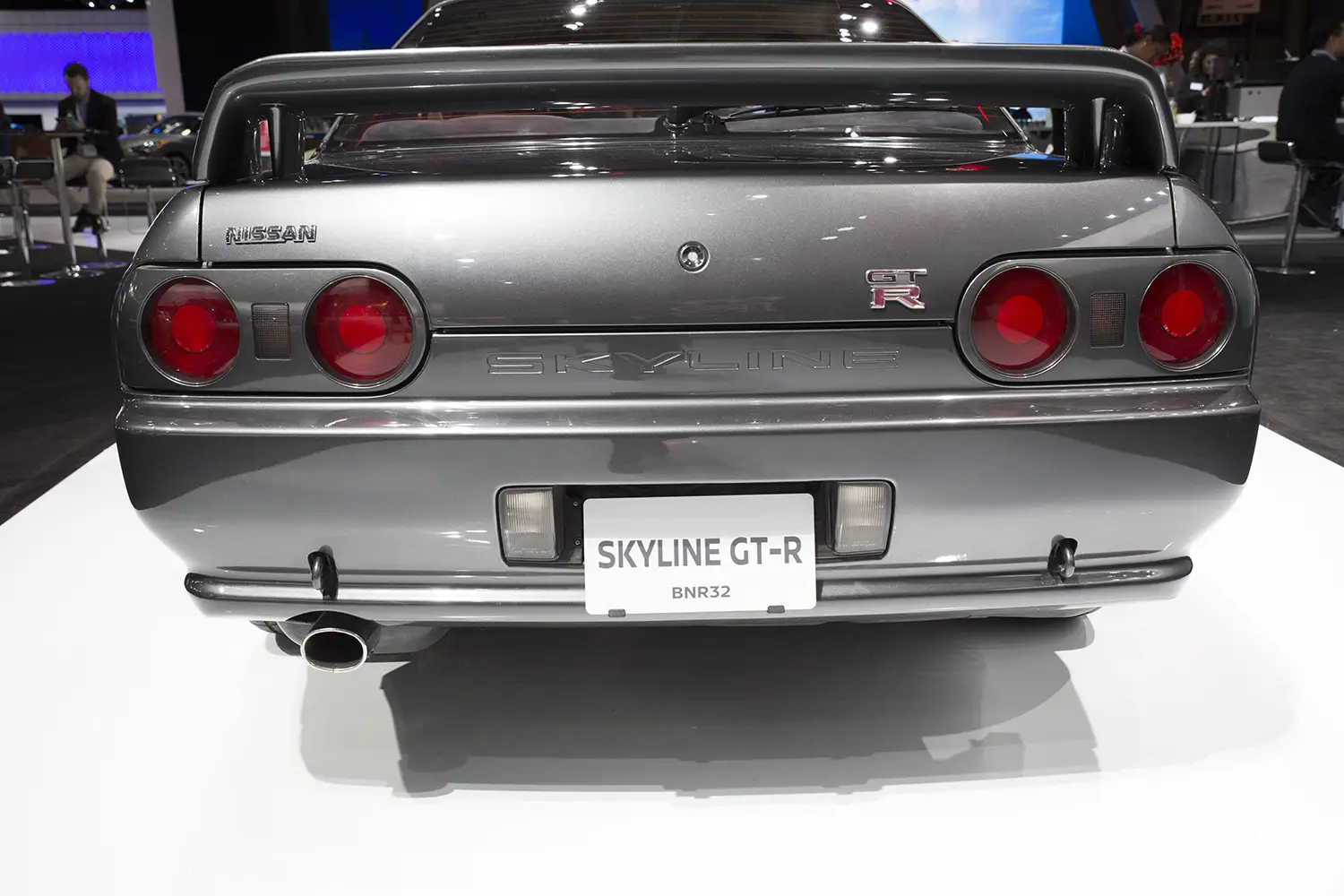
In addition, the car utilized the Super-HICAS four-wheel steering system. This technology helped pivot the rear wheels slightly. Consequently, it improved cornering speed and high-speed stability. This fusion of AWD and four-wheel steering was revolutionary for its era. It gave the GT-R an almost unfair advantage over its competitors.
The Legend of the RB26DETT
The engine block itself became legendary. The car utilized the new RB26DETT inline-six motor. This 2.6-liter unit featured two parallel turbochargers. The engine’s bore and stroke were meticulously chosen for Group A displacement rules. Nissan officially rated the power at 280 horsepower. This was due to the Japanese industry’s voluntary power limit. In reality, the engine’s true, untapped potential was immense. Tuners soon discovered the block could reliably handle over 500 horsepower. Clearly, it was massively over-engineered for the street.
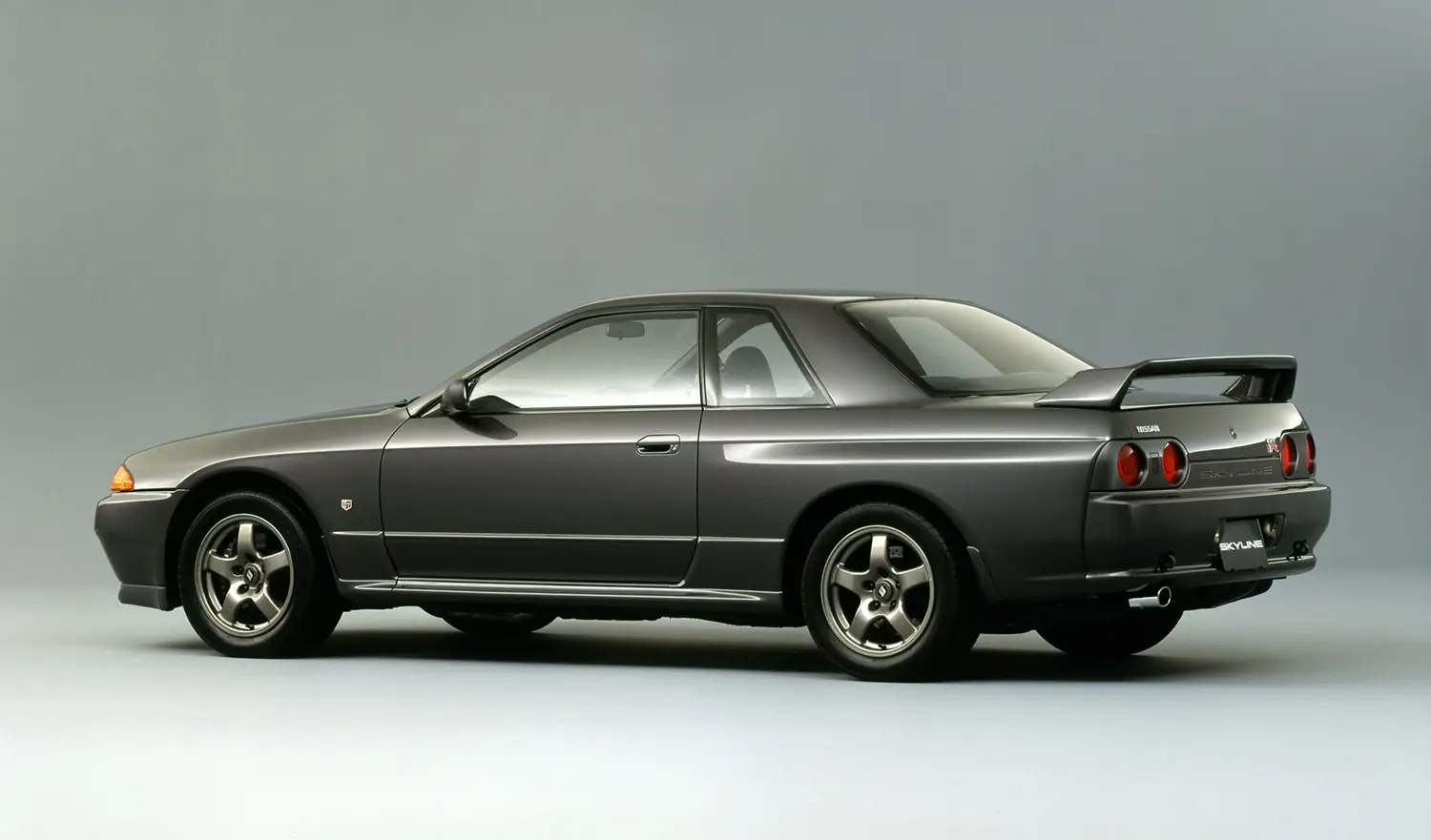
This massive tuning capacity cemented the car’s appeal with performance enthusiasts. The engine’s low compression ratio and robust internals made it perfect for increasing boost pressure. It remains one of the most celebrated Japanese performance engines ever built.
Motorsport Dominance and Godzilla
The 1989 Nissan Skyline GT-R was unstoppable on the racetrack. It achieved an astonishing record in the Japanese Touring Car Championship. Between 1990 and 1993, the GT-R won all 29 races it entered. This incredible run of victories showcased its technical superiority. The R32 also conquered the Australian Touring Car Championship.
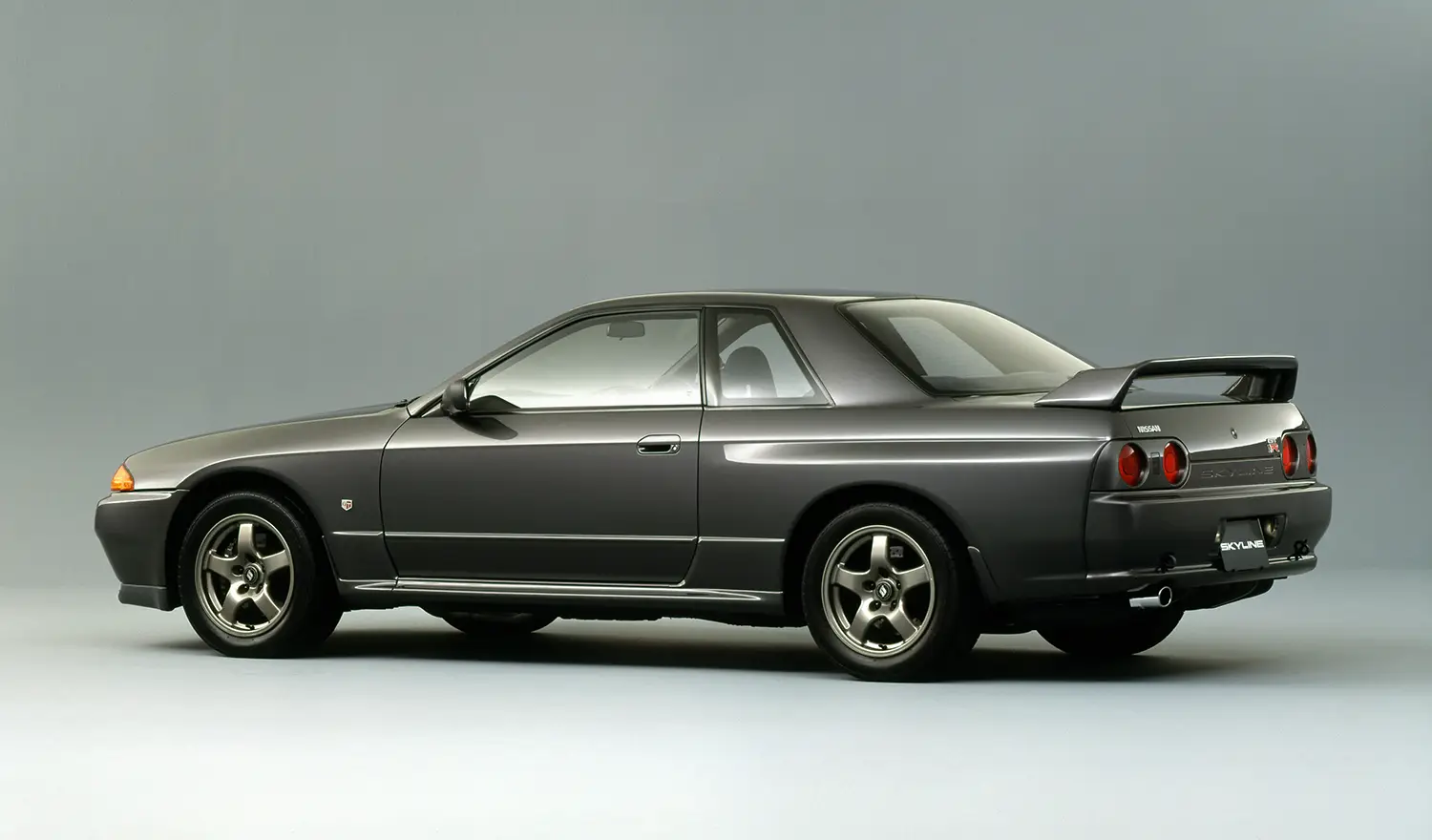
It was this complete, near-mythical dominance that earned the car its famed nickname. Australian motoring journalists began calling it “Godzilla.” It was a nod to the giant Japanese movie monster. The monster was known for destroying everything in its path. This nickname perfectly captured the R32’s terrifying superiority on the track. In short, the car crushed the competition.
Power, Specs, and Unrivaled Performance
The production R32 GT-R’s 2.6-liter twin-turbo RB26DETT engine delivered 280 horsepower and 260 pound-feet of torque. This power was channeled through a five-speed manual transmission. It could achieve a zero-to-sixty mph time in approximately 5.6 seconds. The ATTESA E-TS system was the core of its traction. The chassis featured a multi-link suspension setup at all four corners. This technical layout delivered a level of handling precision that was unmatched by its rivals.
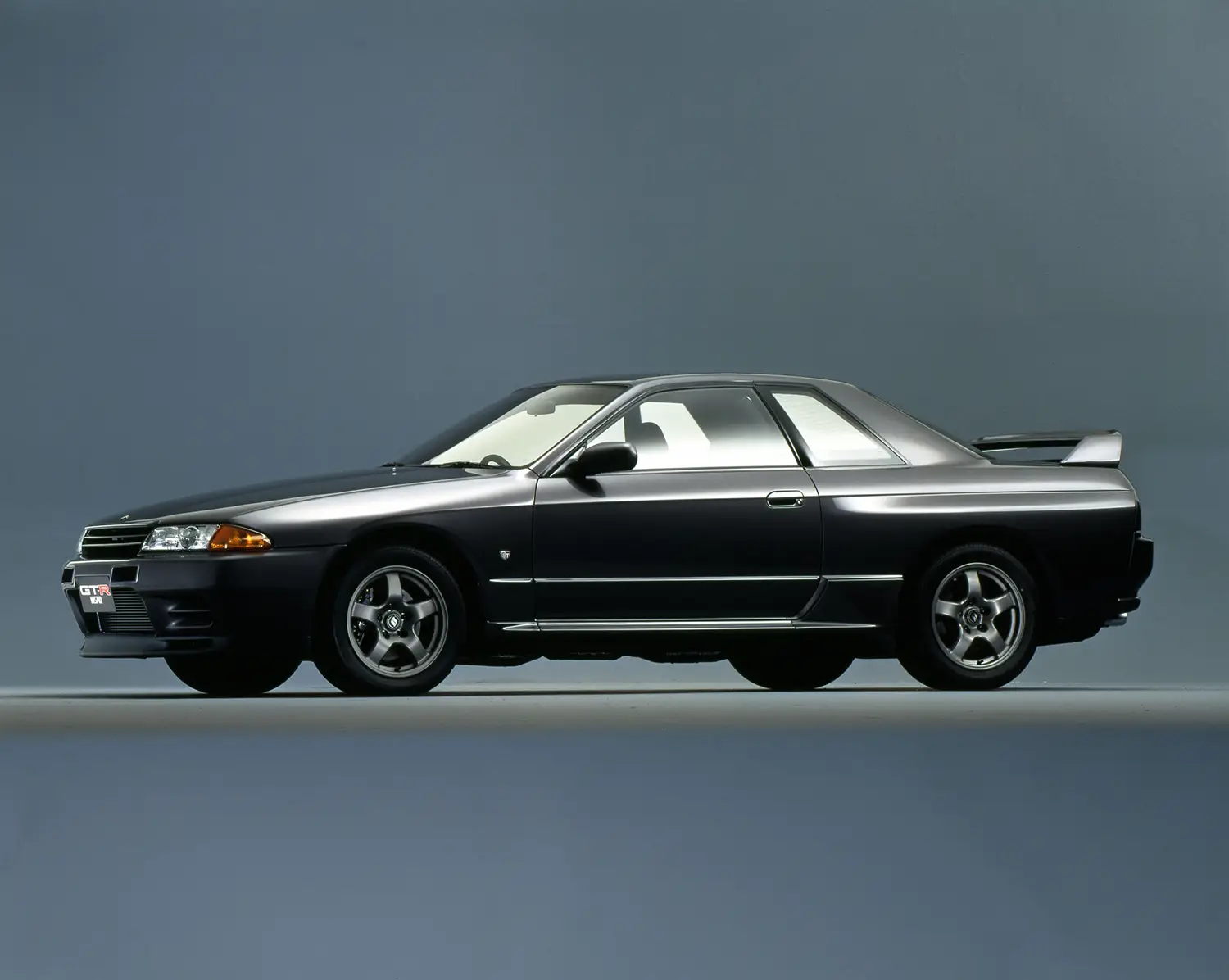
Summary of the Auto Icon
The 1989 Nissan Skyline GT-R is rightfully considered a monumental achievement in automotive history. It was a flawless execution of a mission: to create the world’s most capable touring car racer. The R32 perfected the formula of a twin-turbo inline-six, the ATTESA E-TS AWD, and an instantly aggressive design. This fusion of race-bred technology and sheer performance permanently established the GT-R as a global cultural and auto icon.
Disclaimer: Content on this site is for informational purposes only. Vehicle specs, pricing, and availability may change. Always verify details with official sources before making decisions. Opinions are those of the authors.
Source: Nissan
